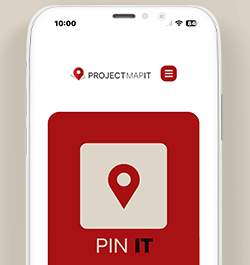Collaborating with project stakeholders and partners
August 27, 2025 at 6:30 a.m.RCS Influencer John Kenney says that seamless project execution is about proactive coordination.
The complexity of projects has grown exponentially in today's world with more moving parts, tighter schedules, new products, technology and reporting demands; the success of a project no longer rests on one team alone. It demands smooth collaboration between all stakeholders, contractors, manufacturers, distributors, architects, consultants and other trades. Even the best-executed plans can unravel when communication breaks down among these parties. But when collaboration is intentional and structured, you create a system that prevents delays, reduces rework and delivers a better experience for clients and crews.
It starts with setting expectations early. One of the most effective ways to foster alignment is through pre-construction meetings that go beyond the project team. You reduce risk when you bring manufacturers and distributors into those early conversations, especially on complex roofing systems or new materials. These partners can clarify lead times, confirm material availability and explain installation nuances that might otherwise catch your crew off guard in the field.
You can avoid last-minute surprises like back-ordered materials or shipment delays by developing strong relationships with your distribution partners and keeping them informed about your project schedules.
Communication with other trades is another area where coordination can make or break the job. Roofers are rarely the only contractors on a site, and clashes with mechanical, electrical or structural crews are common when there’s no shared planning. Taking the time to walk the project together, comparing drawings and understanding sequence dependencies will eliminate a lot of headaches. For instance, if rooftop HVAC curbs are installed after your crew installs the membrane, you’re already looking at a potential leak or warranty issue. Small details like these discussed early save significant time and money.
Technology can help, but only when used correctly. Project management platforms, shared schedules and digital submittal logs are great tools, but they’re only helpful if the information is accurate and timely. A shared platform will enhance communication, not replace it.
Appointing one person as your collaboration lead or point of contact is essential for quickly managing information flow and resolving conflicts. This avoids the scenario where everyone assumes someone else will handle the issue. Having that point person helps reestablish clarity and keep things moving when things get off track.
On the jobsite, daily huddles can create powerful alignment, especially when crews from different trades are working in proximity. A five-minute morning check-in to discuss who’s doing what, where the materials are staged and what equipment will be used helps prevent safety risks and workflow slowdowns. A quick coordination meeting keeps everyone informed and accountable, even on large commercial sites.
Shared success requires shared responsibility. You can’t control every aspect of a supply chain or every action of other trades, but you can control how you lead communication. Set the tone early by being responsive, transparent and respectful of others’ timelines and challenges. When you are the lead in professionalism, others tend to follow suit. And if there’s a breakdown, address it directly and constructively. Avoiding finger-pointing and focusing on solutions keeps teams moving forward.
Seamless project execution is about proactive coordination. The project becomes more predictable, profitable and professional when stakeholders prioritize open communication and shared goals, especially with manufacturers, distributors and trade partners. You don't need more meetings; you need better ones. You don’t need more tools; you need buy-in. And you don’t need to know it all; you need to bring the right people to the table and keep them there.
John Kenney is the CEO of Cotney Consulting Group. See his full bio here.
























Comments
Leave a Reply
Have an account? Login to leave a comment!
Sign In